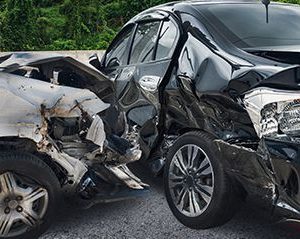- Navigating Your Midlife Crisis: Embracing New Possibilities
- City Raccoons Showing Signs of Domestication
- Mapping the Exposome: Science Broadens Focus to Environmental Disease Triggers
- One Week Less on Social Media Linked to Better Mental Health
- Your Brain Changes in Stages as You Age, Study Finds
- Some Suicide Victims Show No Typical Warning Signs, Study Finds
- ByHeart Formula Faces Lawsuits After Babies Sickened With Botulism
- Switch to Vegan Diet Could Cut Your Greenhouse Gas Emissions in Half
- Regular Bedtime Does Wonders for Blood Pressure
- Dining Alone Could Mean Worse Nutrition for Seniors
Lockdowns Kept Car Crash Rates Low, Ohio Study Finds

Ohio’s lockdown early in the COVID-19 pandemic led to a significant decline in traffic crashes, injuries and deaths, but numbers ticked up once the stay-at-home order ended, a new study finds.
Like many other states, Ohio had a stay-at-home order prohibiting nonessential travel from March 9-22, 2020.
Compared to the same stretch in 2019, Ohio’s lockdown period had 55% fewer traffic crashes; 47% fewer injuries; 34% fewer severe/fatal injuries; and 44% lower traffic volume. The state opened up retail again from March 23 through May 11, 2020.
“With in-person classes suspended in schools, spectators restricted at sporting events, and large gatherings banned, behavior changes occurred, which resulted in fewer drivers on the road, and therefore fewer collisions and injuries,” said study lead author Dr. Motao Zhu, principal investigator in the Center for Injury Research and Policy at Nationwide Children’s Hospital in Columbus, Ohio.
Once stores reopened, traffic problems returned to 2019 levels, the study found.
The number of crashes and severe/fatal traffic injuries rebounded between May 12 and July 31, 2020, according to the research published March 9 in the Journal of the American Medical Association.
The authors noted that previous studies have suggested that the rebound may have been due to increased alcohol and marijuana use, speeding, sudden acceleration/braking, and mobile phone use seen among drivers after the lockdowns.
“As the pandemic continues, policymakers should consider the effects of lockdown and reopening policies on factors beyond COVID-19 infection, including [motor vehicle crash-related] injuries and deaths,” Zhu said in a hospital news release.
As many states imposed stay-at-home orders to reduce the spread of COVID-19, vehicle-miles traveled in the United States were 41% lower in April 2020 than in April 2019.
More information
The U.S. National Highway Traffic Safety Administration offers road safety resources.
SOURCE: Nationwide Children’s Hospital, news release, March 9, 2021
Source: HealthDay
Copyright © 2025 HealthDay. All rights reserved.










